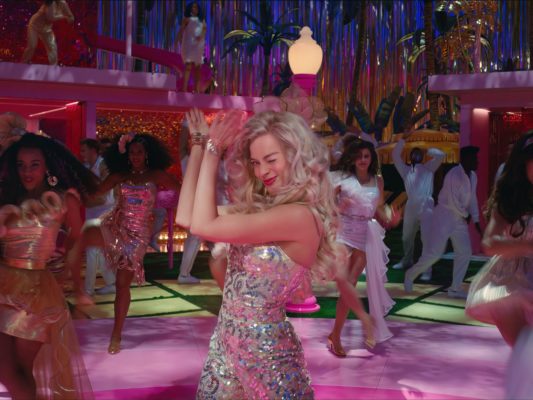
The year’s highest grossing film finally arrives on physical media.
Now available on 4K, Blu and Digital, Barbie (read my original review) remains an absolute delight and a creative triumph. Alas the 40 minutes of special features on the disc are hardly worthy of such a historic title.
Not only is there no audio commentary from director and co-writer Greta Gerwig, several of the featurettes are very slight:
It’s a Weird World highlights the friendship between Greta and Weird Barbie actress Kate McKinnon, who knew each other from a playwriting class. There are a few fun details about Weird Barbie’s look (they brainstormed four wigs and used two), as well as the very deliberate look of the other “Weird” Barbies, but overall this extra isn’t essential.
All-Star Barbie Party is the other lackluster featurette. It’s mostly an overview of the cast, complete with compliments about their talent (“so funny” is the frequent comment) from Gerwig and each other. Very slight.
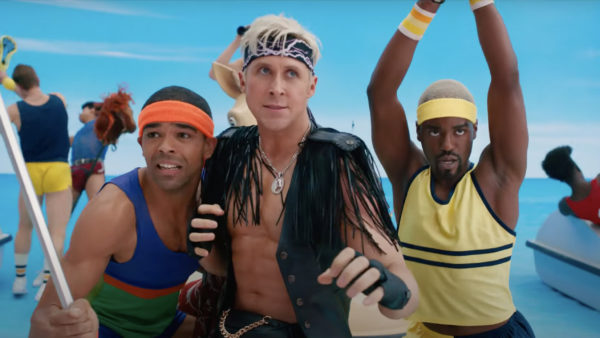
Musical Make-Believe is an overview of the musical/dance numbers, broken down (unofficially) in two parts. After addressing Gerwig’s desire to draw on stage musicals from the 1950s, the featurette focuses on dance choreographer Jenny White and the film’s two dance-heavy sequences: the Block Party and the Kens beach battle/ballet.
We see dance rehearsals and hear about the process to decide how the Barbies will move (not stiff or robotic, but rather with an elegant awareness of their bodies). The Block Party included several weeks of rehearsals with professional dancers and took ~five days to film.
The featurette then shifts to the Ken Battle on the beach, and how Stunt Coordinator Roy Taylor worked with White to mix in duets and tangos among the staged “war” scenes. The dream ballet with Ryan Gosling, Simu Liu and the other Kens is a reference to Gerwig’s love of similar sequences in Oklahoma! and Singing in the Rain (the latter of which is referenced by with the forever horizon of the backdrop).
Fun fact: there is no slow motion used in the beach fight. The actors just slowed down their movements.
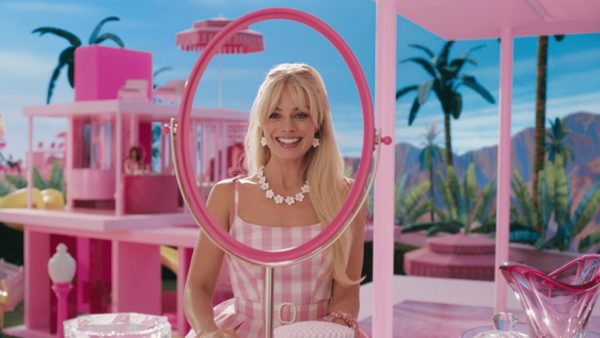
Becoming Barbie focuses exclusively on the efforts to perfect Margot Robbie‘s look as Stereotypical Barbie. There’s a fair amount of talk about wigs (14-15, including her “real life” look in the final scene) as well as “creamy, natural glowiness” of her make-up.
Fun Fact: Robie reveals that they originally considered using makeup to make doll joints visible, and even planned to make her face slightly lighter than her body. The idea was ultimately abandoned because audiences wouldn’t “want to look at that for two hours.”
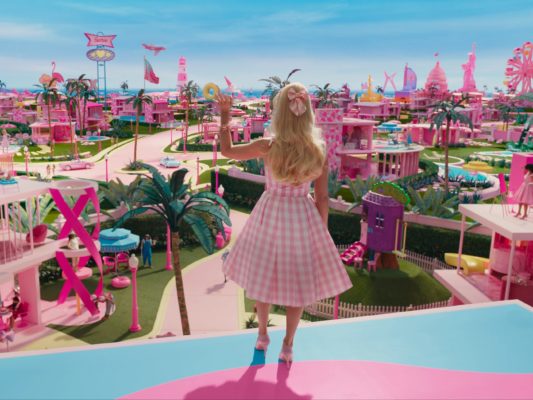
Welcome to Barbieland is the most extensive featurette, which makes sense because it is dedicated to Sarah Greenwood and Katie Spencer‘s sets. There are great views of the giant sound stages where every element was practically designed – from the Dream Houses to the Beach to Weird Barbie’s house (this section recycles a few details from the ‘It’s A Weird World’ featurette) to the Pink (not White) House and, finally, the changes when the Kens take over.
Fun Facts:
- Gerwig’s mantra for the film’s world was “authentically artificial” and she had to keep reminding herself “what would a five year old girl/me want to see?” (The answer was often “brighter pink”)
- Barbieland doesn’t feature any no black and white.
- All of the Dream Houses are constructed at 90 degree angles.
- The height and size of the houses and cars are all 23% smaller than real life to make things feel more toy-like.
- The Beach was hard to crack according to Greenwood and Spencer because there is no water in Barbieland. They finally figured out they should use desserts (meringue, etc) as their inspiration.
- It took three attempts to get the pink right for Issa Rae‘s Oval Office.
- All of the “Travel” sets between Barbieland and the Real World feature stationary 2D vehicles with a moving foreground or background…except the camper. That’s the only Travel set where the camera moves.
- Weird Barbie’s house was inspired by Boo Radley (from To Kill A Mockingbird) and the Bates Motel (from Psycho).
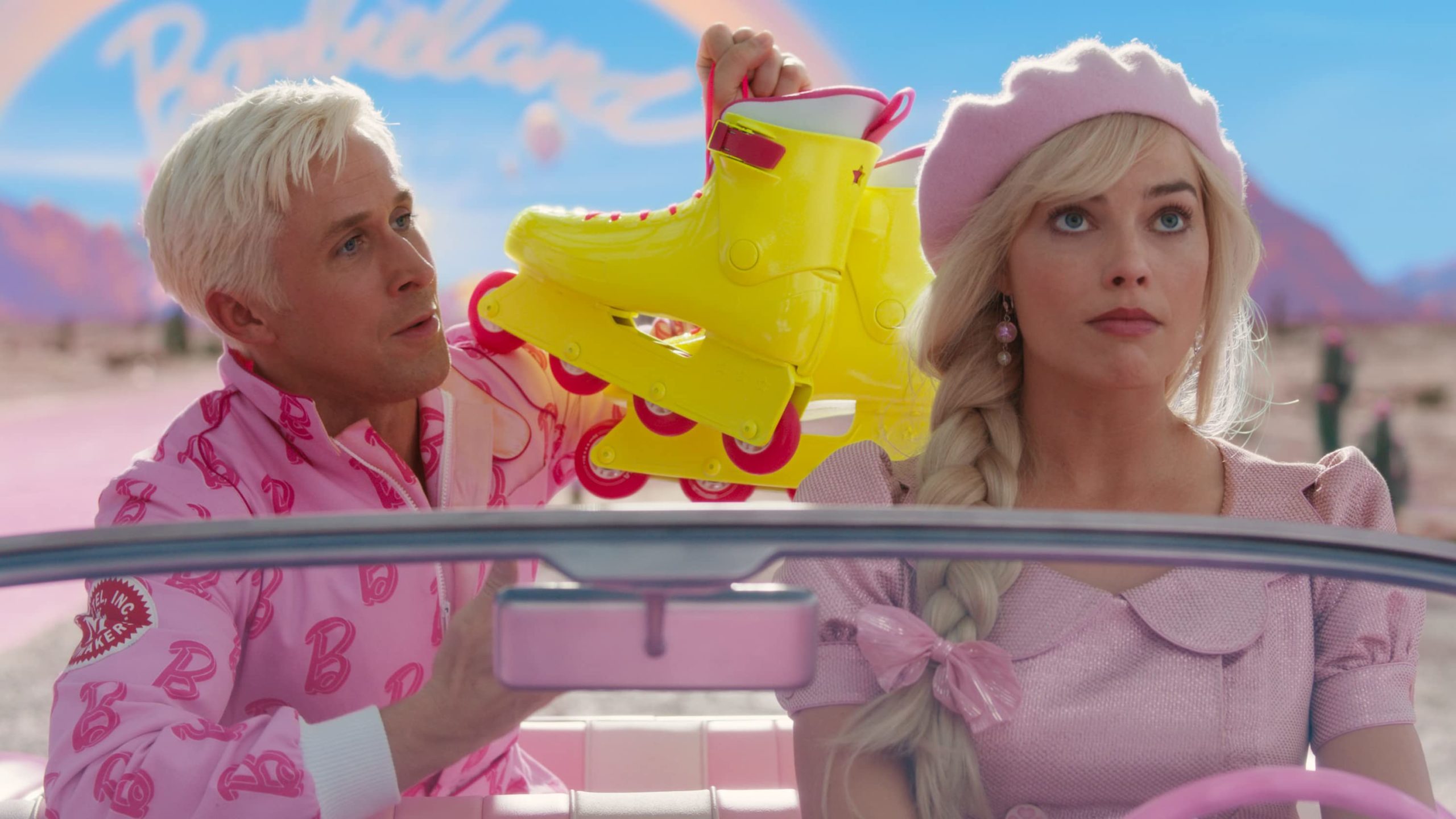
Playing Barbie: An Extended look at Costume is another substantial featurette, which also makes sense considering award-winning costume designer Jacqueline Durran‘s significant contribution to the film. She reveals that the trick to dressing Barbies is to acknowledge that they are always dressed for a purpose, while Gerwig notes that big pieces as accessories help make the actors seem more doll-like.
Fun Facts:
- Many of the actors gave personal feedback into their character’s wardrobe to ensure it reflected them (trans actress Hari Nef, for example, opted for “high femme” looks with tall heels, etc because she wanted to “drag” Barbie up).
- The clothes are organized by decade, moving forward chronologically throughout the film
- This begins with Barbie’s black and white bikini outfit in the 2001-inspired opening sequence, which is a reference to the very first Barbie from 1959.
- Barbie’s gingham dress/swimsuit in her wake-up scene and at the beach are inspired by 60s fashion, specifically Brigitte Bardot.
- The white and gold Block Party sequence is (obviously) 70s disco and features 30 outfits.
- Barbie and Ken’s neon roller skating look is a reference to Hot Skating Barbie from 1994.
- The Kens’ patriarchy looks are primarily tied to the fashion of the 80s/90s: athletic wear, fringe and leather.
- Ken’s racing suit in the sequence when he hides out in Barbie’s car as she heads for the real world was Ryan Gosling‘s creation.
- As Barbie becomes more human near the end of the film, her clothes become more pastel, less structured, and the lines less clean/rigid (but always beautiful and feminine).
Barbie is now available on Digital and Physical media.